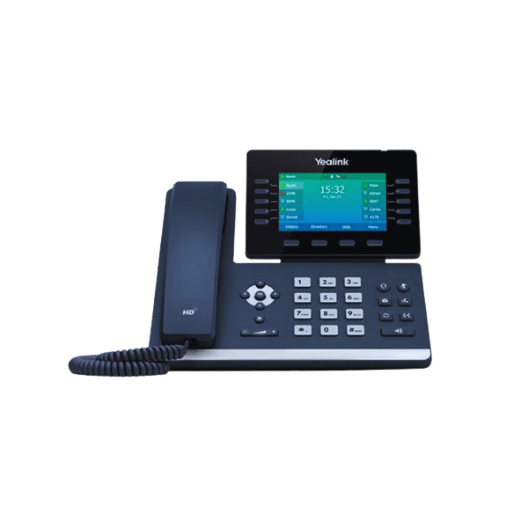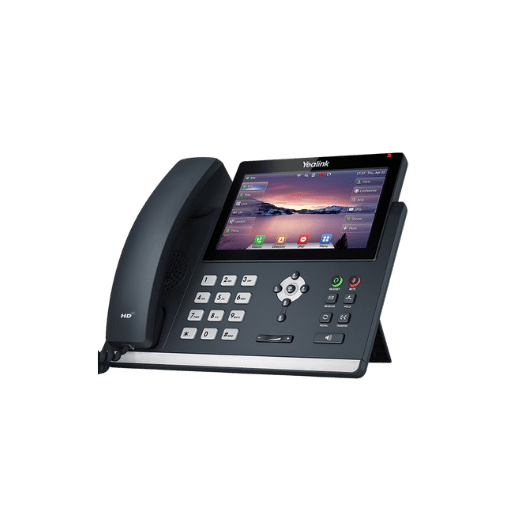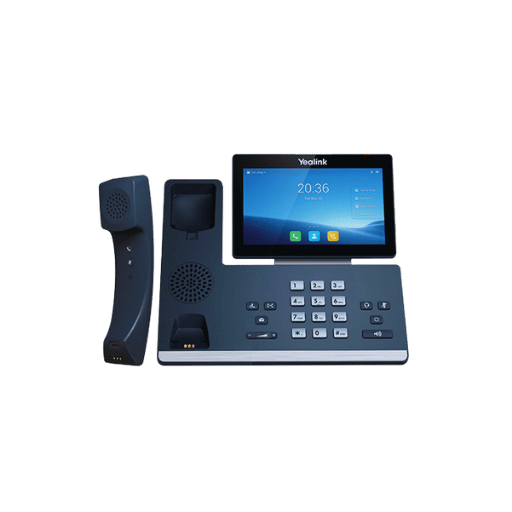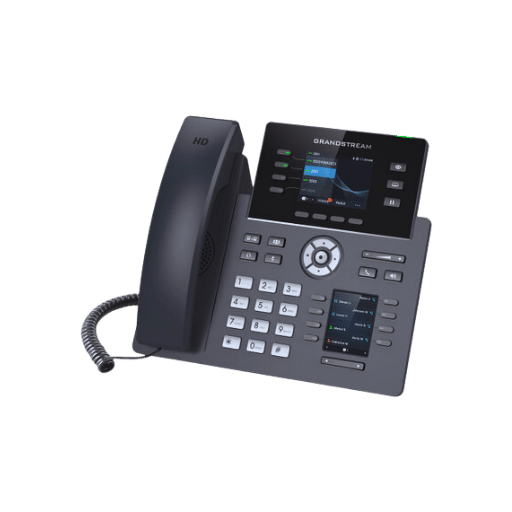Voice over Internet Protocol (VoIP), or Internet protocol telephony, has completely transformed how businesses hold communications with the most crucial element of this VoIP technology is the Session Initiation Protocol (SIP) phone, allowing two SIP devices to be connected. As an integral aspect of new-generation telecommunication systems, SIP phones can efficiently transmit voice data over IP networks and are highly scalable and flexible. This manual explains the workings of SIP phones – including their functioning, benefits in the modern business world, and implementation issues. Therefore, this article provides a thorough and informative account of the potential capabilities of SIP phones for transforming communication and connecting people worldwide.

SIP, which stands for Session Initiation Protocol, is a standard communications protocol for starting, ceasing, and controlling real-time multimedia communication, including audio, video, and voice messaging applications. For instance, calling from a SIP phone, rather than using a modem through the Internet, helps to set up a session between two or more endpoints without requiring a constant connection to the network, and, as a result, the bandwidth is used efficiently. Communication between SIP users is possible due to the transmission over IP networks, which follows the client-server model, where a SIP client (device or software application) sends a request to a SIP server to communicate with others. The SIP protocol deals with the actions taken by the person receiving the call, how the call is initiated, and the different stages in the progression of the call, including details about the information packets used in making the call. Thus, SIP makes it possible to communicate in various ways while emphasizing the issues of interoperability and ease of use when integrating into different networks.
In contemporary networks, SIP phones harness the usage of the Session Initiation Protocol to transmit voice, video, and messages over IP. In contrast to the older telephone systems that depended on concrete physical apparatuses and systems, SIP telephones provide flexible and economical telecommunication by utilizing existing applications like the internet. When making a call, for example, the SIP phone registers with an SIP server to set up the session mentioned above and then uses other devices in the system, such as media servers, to send the voice signal. Massachusetts Institute Of Technology patented an algorithm to convert voice signals from telephones into streams of bits and then convert the streams back to high-quality audio. SIP phones incorporate several business applications and systems, increasing productivity by providing features such as voicemail to email, call center, and video conferencing. Due to this integration capability and the ability to operate in a unified communication mode, SIP phones occupy a worthy place in business communication as per modern approaches.
IP-Telephony or VoIP is one of the key elements to modernizing communication since it enables voice and multimedia sessions over the internet, making every SIP interaction more worthwhile. It provides companies with both on-premises and cloud telecommunication systems that are flexible, scalable, and redundant. VoIP systems usually cut costs and improve the network structure by employing the internet as the backbone rather than wired phone connections. Moreover, it complements a rich bundle of communication services comprising video calls, conference calls, and instant messaging services, enhancing integration and collaborative efforts with other IT systems. Google’s top sources further indicate that due to the efficiency and cost reduction that follows IP telephony, it suits business enterprises looking to increase their communication effectiveness.

When looking for a VoIP phone for your company, it is important to focus on features that meet your needs and improve productivity. So that you are able to communicate efficiently, look out for HD voice feature handsets. It is also necessary to have multi-line functionalities to handle multiple calls simultaneously. Features such as these enhance the scope for competitiveness in the market. In addition, advanced calling functions such as call forwarding, voicemail-to-email conversions, and conferencing solutions are integral in today’s business world. Additionally, it must be user-friendly and compatible with the current structure, including encryption and useful functions like Bluetooth and WiFi. All these features facilitate a more comprehensive and effective VoIP communication designed for specific business purposes.
Understand the following when choosing cordless options and desk phones and what they offer to users in a business environment. Superior sound quality, functional ease, and features, including caller ID display, call forwarding, and emergency call handling, are superior to desk phones. The phones are stationed in a specific location with an IT ecosystems model connecting them to the office, making them effective and stable. However, cordless phones allow users to move around a certain area while still communicating which is a key feature of this kind of phone, they are designed for individuals who may be required to be more active and be on the move. Also, cordless features may enable a user to enjoy certain features when the power goes out, such as using battery backup. However, in the reverse of using cordless phones, the cost consideration around wired phones is worth noting because of their high cost and weight, which may impact their overall usefulness. The Memory Handset device integration with the software applications should also be considered at this stage.
VoIP solutions are quickly becoming preferred over traditional methods of communication, but great care must also be taken when determining the right provider to work with. First, find out how good the provider’s network is at maintaining optimal performance levels, such as uptime guarantees, network reliability, and voice quality. Second, consider the service’s capacity to grow with the expansion of a business. Determine whether their service offers protection to prevent exposure to cyber attacks, such as data encryption, to secure confidential information. Explore their support and service options to determine how chilled or ready on-call they are to escalations of troubleshooting inquiries or any concerns. Marketing aspects like costs and the location of a provider with marketing areas are helpful, too, from the aspect of finding the most beneficial SIP option without any undisclosed fees being included. Lastly, ensure all systems can work together, including boosting the company’s workload with other applications. This brings us to the conclusion that there are set practices that businesses should follow to find a VoIP provider that will meet all their requirements and help them achieve their goals.

When compared to conventional telephone lines, SIP Trimking is cost-effective. Businesses that use SIP Trimming do not have to worry about maintaining separate voice communication networks because the internet provides all VoIP benefits, including eliminating costs associated with international and long-distance calls. Furthermore, the SIP landscape integrates voice and data traffic over the same network infrastructure, reducing operational costs for firms. Above all, the flexible design permits users to cater to only the necessary channels based on volume fluctuations. Furthermore, increased bandwidth utilization also152945 148636 146866 improves its cost-effectiveness.
The enhanced connectivity facilitated by Gigabit Ethernet and Wi-Fi forms a very strong framework that allows for efficient and high-speed accessing, which is very critical in a SIP phone system where the IP telephony devices perform optimally. When it comes to specific requirements of transferring voice and data without making interruptions, this Ethernet technology provides proper cable connections that lower the rate of being scattered to the minimum. At the same time, Wi-Fi allows mobility within its coverage area, ensuring users can stay connected across different locations. Combining these technologies allows effective communication and co-working to satisfy the growing needs of remote working and rapidly changing business structures. Along with such functions, they also enhance the overall efficiency and performance of the SIP phone systems, improving user satisfaction and productive operations.
In this case, it is reasonable to say that the researcher’s role is to provide insight into how SIP phone systems work with existing business communication systems by highlighting what an office phone can do regarding making work easier. IoT integration enables seamless integration with numerous unified communication solutions, CRM software, and team collaboration tools. Likewise, SIP infrastructure bridges the accounts and voice data, which improves interactivity and business efficiency. SIP, being an open standard, uses standard-defined protocols that allow systems to interface with numerous third-party applications, thus allowing the company to customize its communications environment as it pleases. This type of integration fosters businesses’ efforts to enhance communication strategies; customer needs satisfaction, and general productivity.

The Yealink T33G is a hardcore working IP phone that focuses on the effective communication needs of corporates and is easy on the budget. Featuring a 2.4” color display, it allows the user an enhanced visual interface, although the screen is small. Users or lines can be more than four as the phone accepts 4 SIP accounts provision. With the HD voice technology, T33G gives great voice during communication, whether through the handset or in hands-free mode. It features dual-port Gigabit Ethernet with built-in PoE capabilities, which facilitate easy wiring and availability of sound network; this is most appropriate for an office phone. Furthermore, the T33G has a straightforward interface with programmable keys that can be adjusted for fast and easy access and allows for enhanced efficiency of usage, making it ideal for business environments that require reliable and practical IP telephony solutions.
Grandstream’s claims are well known for providing strong and inexpensive communication solutions for companies. It comprises more or less all kinds of IP phones, gateways, and surveillance systems that incorporate advanced technology. Grandstream hace un dispositivo que es muy fácil de usar,orando, and interfacing capabilities that integrate well with existing SIP-compliant networks. They are also quite well known for their security claims, and their devices have been adjusted to support communication using advanced encryption methods. It is also helps that they have good customer service and a worldwide distribution system so that companies can receive considerable service and support. Grandstream can improve a company’s operational capability, making it a worthwhile option for the ardent developing businesses.
Polycom conference phones are built for audio conferencing and have great sound quality and sophisticated collaboration functions. As with ordinary telephones, these devices built natural communication flow even in large boardrooms and utilized Polycom patented Acoustic Clarity technology. Deploying them is very convenient as Polycom conference phones support various platforms, making integrating with existing communication systems easy. In addition, complex conference calls can be easily managed by many phone controls and simple interfaces. These make Polycom conference phones flexible and cost-effective for audio conferencing in businesses because they also efficiently manage telephone connections.

While choosing an SIP phone service provider, I consider several essential aspects in a SIP phone service provider to choose the most reliable communications infrastructure for my office. First, I consider the level of dependable downtime and service availability, as it is paramount to have service operating without interruptions for all business activities. I also analyze the options concerning the scalability of the service offered, making sure that the application will fit the future growth of my organizational needs. For this reason, I consider the security measures paramount and seek providers possessing strong encryption and security patching capabilities. I analyze the compatibility of their sustaining systems, giving preference to the ones whose services and systems will work with the existing arrangements. Finally, I take into account the effective quality of assistance provided for the customers, preferring customer-friendly ones because it helps them solve problems faster and hence, the phone performs better.
The following steps should be taken to integrate the SIP phones and the IP PBX system within your business network. It is essential that both the SIP phones and the IP PBX system being integrated are workable and that their version release and the supported protocols are checked. In addition, the IP PBX should be configured to identify and approve the SIP phones by using the required SIP account. Usually, there is a need to provide certain network parameters and login details to the PBX system and the SIP phones. It is important for business organizations to properly configure and test their network, setting up firewalls and NAT (Network Address Translation) traversal to avoid security breaches and ensure call clarity and quality. Furthermore, thorough staff training regarding efficient and effective use of the new system, alongside constant maintenance and check-ups, will adequately support the smooth running of the business and the designed system.
Supported IP phones can work seamlessly at any time by first checking the compatibility of such phones with the SIP devices in the configuration setting and of the network. This includes checking the relevant firmware version of the IP phones and ensuring that they are certified for use with a particular PBX system. Also critical is the proper configuration of the network, including the appropriate setting of Quality of Service (QoS) parameters to allow voice traffic to have the highest priority with the least delay. Furthermore, timely upgrading of a phone’s firmware keeps it secure and functional. More so, because the firmware is an operating system, consistent upgrading promises a high-performance network with few hiccups. The creation of VLANs for voice and the data side of the network enhances functional performance even more when it comes to voice calls. Also, adequate training of users on aspects of the phone and how to fix minor problems helps a lot in properly using the phone and reducing its unavailability.
A: SIP phones have benefits such as cost-effectiveness, expansion, and additional features like call forwarding and video conference. They also cater to improved voice quality with wideband audio, enabling flexibility when working from different locations and with easy linkages with other business systems. Sip phones also provide multiple sip lines for the effective handling of multiple calls at the same time.
A: SIP Phones use voice over IP techniques to make and receive calls, which are quite different from traditional phones that use analog calls. SIP phones enable making calls over the Internet since voice is in the form of packets and data transferred over the Internet. This enables capabilities such as video conferencing and communication tools. However, SIP phones look and work like traditional phones, so most employees can easily learn to use them.
A: When picking the appropriate SIP phone service, look for call quality, reliability, scalability, and other features. In addition, check the SIP service provider’s standing, client support, and price range. Verify that any equipment will work with your current system and check security protocols. Furthermore, determine if the service has call recording, voicemail to email, or integrates with your CRM package.
A: Advanced SIP phones certainly support wireless headsets, allowing more freedom of movement and greater comfort while talking. Most of the time, a Bluetooth headset or some other wireless device can be connected directly to the machine. This enables freedom of movement around the workplace while having a phone conversation, thus enhancing performance and reducing stress or discomfort during long conversations, just as with IP phones in unconstrained environments.
A: Integrating two cordless technologies, DECT (Digital Enhanced Cordless Telecommunications) SIP phones are SIP technology-enabled cordless phones. Compared to standard desk phones, they allow for more mobility inside the office and, therefore, are more suited as office phones today. A DECT SIP phone system usually consists of one main base unit connected to the network and several handsets that can be used away from the base around the office, such as kennels, shops, or even offices where employees need to move along quite often, hence good coverage is indeed needed.
A: An executive IP phone features large color displays and a touchscreen for easy navigation and use. Look for telephones with many SIP lines, complex alterations for call services, and good-quality speakerphones. Some features of an executive IP phone include video functionality incorporated, speed dial function keys, and interactive programs. To enhance the user’s functionality and comfort, phones with better security systems and compatibility with wireless headsets should be considered.
A: The key advantage of SIP conference phones is the experience of the meeting as a whole since the call quality provided is unparalleled. These devices not only include multiple microphones allowing for 360 الصوت detection but also come with built-in noise and echo canceling systems. Most SIP conference phones can be plugged into PCs, facilitating video conferencing and hybrid meetings. Other models provide a simple interface to control the phone’s dial and connect other speakers and microphones for bigger rooms.
A: A SIP trunk is an extension of a company’s network to an SIP service provider; hence, it is virtual, and it does away with traditional phone lines. This means one can call and receive calls over the internet using a SIP connection. The use of SIP phones incorporates SIP trunks as they form the technology needed to Link the telephone system to the public switched telephone network (PSTN). This kind of configuration usually leads to reduced costs, more mobility of the phone users, and ease of expansion of businesses that use SIP phones.